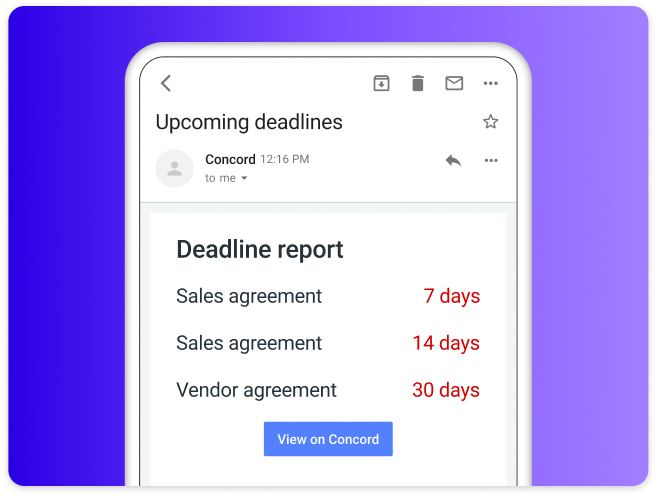Contract Automation Software: The Complete Guide for 2025
Table of contents
- The evolution of contract management
- The high cost of manual contract processes
- Key capabilities of modern contract automation software
- Measuring the ROI of contract automation
- Implementation strategies for success
- Industry-specific applications
- Emerging trends in contract automation
- Implementation challenges and solutions
- Conclusion: The business imperative for contract automation
- Frequently asked questions about contract automation software
Modern organizations across all sectors face mounting pressure to optimize processes, reduce costs, and mitigate risks. One area ripe for transformation is contract management—a function critical to business operations yet often bogged down by manual, time-consuming processes. Contract automation software has emerged as a powerful solution to these challenges, offering businesses the ability to streamline workflows, enhance compliance, and unlock significant value from their contractual relationships.
The evolution of contract management
Traditional contract management involves numerous manual processes—from drafting and negotiation to execution and monitoring—creating bottlenecks, increasing error risks, and consuming valuable resources. As businesses grow and contract volumes increase, these inefficiencies become increasingly problematic.
“Contracts are no longer just static legal documents. They are dynamic, data-rich assets crucial to a company’s financial health,” explains Michael Bearman, Chief Legal & Safety Officer at Vecna Robotics. This evolving perspective has driven rapid adoption of sophisticated contract automation solutions designed to transform contract processes.
Contract automation software has undergone a remarkable transformation in recent years. What began as simple digital repositories has evolved into sophisticated platforms that leverage artificial intelligence to extract valuable insights from agreements. This evolution reflects a fundamental shift in how organizations view contracts—no longer as mere legal documents, but as strategic assets that can drive business value.
The high cost of manual contract processes
The financial impact of inefficient contract management is substantial and often underestimated:
- Organizations with 1,000+ employees spend between $2.5-$3.5 million annually searching for or recreating lost documents (Procurement Tactics, 2025)
- Poor contract management can cost companies up to 9.2% of their annual revenue through ineffective processes and missed opportunities (Precisely, 2023)
- The cost of manually creating and managing a single contract ranges from $6,900 for basic agreements to $49,000+ for complex contracts (ContractSafe, 2024)
- Without effective automation, up to 40% of an employee’s time is spent on low-value contract tasks, resulting in approximately $2.7 million in lost productivity annually
These statistics highlight why organizations across industries are prioritizing contract automation as a strategic initiative. By implementing intelligent software solutions, businesses can significantly reduce these costs while improving operational efficiency.
Key capabilities of modern contract automation software
Today’s contract automation platforms offer comprehensive functionality that addresses the entire contract lifecycle:
1. AI-powered contract creation and analysis
Modern contract automation leverages artificial intelligence to streamline document creation and analysis. According to Gartner, AI is expected to cut manual labor in the contract review process by half in 2024 (ContractSafe, 2024). This technology enables:
- Automated template selection based on contract type
- Dynamic clause insertion tailored to specific requirements
- Risk identification and flagging of problematic language
- Extraction of key terms from existing contracts for analysis
The impact of this capability is substantial—AI can complete contract reviews in 26 seconds compared to 92 minutes for human reviewers, while outperforming trained lawyers by 10% in accuracy (ContractSafe, 2024).
2. Streamlined workflow automation
Contract automation software implements defined approval workflows that route documents to appropriate stakeholders in sequence, ensuring proper review while eliminating manual handoffs. These workflows:
- Reduce bottlenecks in the approval process
- Provide real-time visibility into contract status
- Automatically escalate delayed approvals
- Create audit trails for compliance purposes
Jenny McMullen, Corporate Contract Administrator at Yates Construction, notes: “All messages and comments live right inside the agreement. Instead of five separate email chains, we’ve got everything in one place now.” This centralized approach saved her organization $15,000 monthly in reduced administrative overhead—a 25% reduction in contract administration costs.
3. Centralized contract repository
A secure, searchable repository serves as a single source of truth for all contracts and related documents. This centralization:
- Eliminates the need to search through email, shared drives, or physical storage
- Enables powerful search capabilities across all contract content
- Provides role-based access control for appropriate visibility
- Creates a complete audit history of all contract actions
According to Wolters Kluwer (2024), 65% of Chief Procurement Officers believe that contract management software improves risk management by enabling organizations to identify potential issues before they escalate.
4. Automated alerts and notifications
Contract automation platforms provide proactive notifications for critical dates and deadlines, ensuring teams never miss important milestones such as:
- Renewal deadlines
- Expiration dates
- Payment obligations
- Compliance requirements
- Performance reviews
This capability is particularly valuable for managing large contract portfolios. The International Association for Contract and Commercial Management reports that effective contract management can lead to a 9.2% improvement in annual revenue, with automated alerts playing a key role in this value creation.
5. Integration capabilities
Modern contract automation solutions integrate with existing business systems to create a unified ecosystem where data flows seamlessly between applications. Common integrations include:
- Customer Relationship Management (CRM) systems
- Enterprise Resource Planning (ERP) platforms
- Electronic signature solutions
- Procurement systems
- Financial management tools
These integrations eliminate duplicate data entry, ensure consistency across systems, and provide a more comprehensive view of business relationships.
Measuring the ROI of contract automation
Understanding the return on investment (ROI) from contract automation software is essential for securing buy-in and justifying the expense. Here’s a framework for calculating potential ROI:
| ROI Category | Calculation Method | Average Impact |
|---|---|---|
| Time Savings | (Hours saved per contract × Average hourly rate × Number of contracts per year) | 82% reduction in time spent (Procurement Tactics, 2025) |
| Process Efficiency | (Average cycle time reduction × Cost per day of delay × Number of contracts) | 80% faster cycle time (ContractSafe, 2024) |
| Risk Reduction | (Potential cost of non-compliance × Risk reduction percentage) | 55% compliance improvement (GatekeeperHQ, 2024) |
| Administrative Cost Reduction | (Current administrative costs × Expected reduction percentage) | 25-30% cost reduction (ContractSafe, 2024) |
| Revenue Capture | (Value of improved renewal rates × Contract renewal percentage improvement) | 56% renewal rate (vs. 25% industry average) |
According to PwC, enterprises could save 2% of their total annual costs by implementing automated contract management systems to improve contract accuracy and compliance. Goldman Sachs concludes that automation can speed up negotiations by 50% and reduce payment errors by 75-90% (Contract Logix, 2023).
Implementation strategies for success
Successfully implementing contract automation software requires thoughtful planning and execution. Based on industry best practices and customer experiences, here are key recommendations:
Phase 1: Assessment and preparation (1-3 months)
- Conduct a contract inventory to identify all existing contracts, their locations, and current management processes
- Define clear objectives aligned with organizational goals, such as reducing cycle time or improving compliance
- Identify key stakeholders and form a cross-functional implementation team with representatives from legal, procurement, IT, and relevant business units
- Establish success metrics for measuring ROI and impact
Phase 2: Implementation and configuration (3-6 months)
- Select the right solution based on your specific requirements, budget, and integration needs
- Configure workflows to match your approval processes and business rules
- Migrate existing contracts into the new system, using AI to extract key terms and metadata
- Integrate with key systems to create a connected ecosystem
- Develop standardized templates and clause libraries for consistency
Phase 3: Adoption and optimization (6+ months)
- Provide comprehensive training tailored to different user groups
- Create champions within each department to drive adoption
- Monitor usage and performance against established metrics
- Gather user feedback for continuous improvement
- Expand capabilities by implementing advanced features and additional integrations
Following these phases helps organizations avoid common pitfalls and maximize value from their contract automation investment.
Industry-specific applications
While contract automation delivers benefits across all sectors, its application varies based on industry-specific needs:
Higher education
Colleges and universities manage thousands of contracts with complex compliance requirements. A National Association of Educational Procurement study found that the average higher education institution spends $70 million on outside vendors and maintains relationships with 1,230 different vendors.
Contract automation software helps these institutions:
- Centralize contract management across decentralized departments
- Standardize agreements for consistent terms and conditions
- Ensure regulatory compliance with laws like FERPA
- Track vendor relationships to prevent duplicate contracts
- Protect intellectual property and sensitive information
According to Contracts365 (2023), contract automation can accelerate negotiation cycles by 50%, reduce erroneous payments by 75-90%, and cut operating and processing costs by 10-30% in educational institutions.
Healthcare
Healthcare organizations must manage complex regulatory requirements while controlling costs. Contract automation provides:
- Enhanced HIPAA compliance through standardized agreements
- Streamlined credentialing processes for practitioners and facilities
- Improved vendor relationship management for medical supplies
- Risk mitigation for patient care agreements and insurance contracts
- Consolidated visibility across multiple facilities
One healthcare organization, Kettering Health, implemented contract automation to transform their contract management processes, resulting in significant time savings and improved compliance (Aavenir, 2021).
Financial services
The financial sector deals with high-volume, high-risk contracts that require stringent compliance. Contract automation helps by:
- Ensuring adherence to regulations like GDPR, KYC, and AML
- Standardizing complex financial agreements
- Providing audit trails for regulatory reporting
- Managing counterparty risk through automated assessments
- Accelerating deal closures for time-sensitive transactions
JP Morgan implemented blockchain-based smart contracts for cross-border payments, significantly reducing processing times and improving efficiency (Legittai, 2024).
Emerging trends in contract automation
The contract automation landscape continues to evolve, with several key trends shaping its future:
1. Generative AI advancements
Generative AI is transforming contract automation, with capabilities extending beyond simple data extraction to include:
- Drafting complete contracts based on minimal inputs
- Analyzing historical negotiations to suggest optimal terms
- Generating customized playbooks for different contract types
- Predicting potential risks and suggesting mitigations
According to DocuSign (2025), generative AI represents a “game changer” for contract professionals, though implementing it effectively requires careful consideration of when and how to apply it.
2. Blockchain and smart contracts
Blockchain technology is enhancing contract automation through:
- Tamper-proof audit trails for greater accountability
- Self-executing smart contracts that automatically enforce terms
- Enhanced security for sensitive contract information
- Streamlined multi-party agreements with greater transparency
Organizations like Dubai’s Land Department have implemented blockchain-based systems for property transactions, resulting in increased efficiency and reduced fraud (Legittai, 2024).
3. Mobile-first solutions
As work patterns shift toward hybrid models, contract automation is adapting with mobile-friendly interfaces. According to ContractSafe (2024), 71% of legal teams now operate in a hybrid model, increasing demand for accessible contract solutions that work across devices.
These mobile capabilities ensure that business continues uninterrupted regardless of location, enabling:
- On-the-go contract approvals
- Real-time collaboration from any device
- Instant access to contract information in meetings
- Electronic signatures from mobile devices
4. Predictive analytics
Advanced analytics capabilities are enabling organizations to:
- Forecast renewal outcomes based on historical data
- Identify patterns in contract performance
- Optimize pricing based on contract analysis
- Predict potential compliance issues before they occur
- Recommend strategic contract improvements
These capabilities transform contract management from a reactive to a proactive function, helping organizations identify opportunities and mitigate risks before they materialize.
Implementation challenges and solutions
While the benefits of contract automation are clear, organizations often face challenges during implementation. Understanding these potential roadblocks and their solutions can help ensure success:
Challenge 1: Stakeholder resistance
Many stakeholders, particularly legal teams, may resist changing established processes or worry about automation replacing their expertise.
Solution: Focus on how automation enhances rather than replaces human judgment. Involve key stakeholders early in the selection process and demonstrate how the system will address their specific pain points. Create champions within each department who can advocate for the solution.
Challenge 2: Data migration complexity
Migrating existing contracts and extracting relevant data can be daunting, especially for organizations with thousands of legacy agreements.
Solution: Develop a phased migration approach, prioritizing active contracts and those nearing renewal. Leverage AI-powered data extraction to automate the process, and establish clear data standards for consistency. Consider working with implementation partners who specialize in contract migration.
Challenge 3: Integration with existing systems
Ensuring seamless data flow between contract automation software and other business systems can be technically challenging.
Solution: Prioritize solutions with robust API capabilities and pre-built integrations with your existing tech stack. Develop a clear integration strategy, focusing first on critical systems like CRM and ERP. Consider conducting pilot integrations before full deployment.
Challenge 4: Budget constraints
Securing funding for new technology investments can be difficult, particularly without a clear ROI case.
Solution: Build a compelling business case highlighting both hard cost savings and soft benefits. Start with a smaller implementation scope to demonstrate value quickly, then expand. Consider solutions with flexible pricing models that allow you to scale as needed.
Conclusion: The business imperative for contract automation
As organizations face increasing pressure to optimize operations, reduce costs, and mitigate risks, contract automation has evolved from a nice-to-have technology to a strategic necessity. By transforming how contracts are created, executed, and managed, automation enables businesses to:
- Accelerate contract cycles by 80%, creating faster paths to revenue
- Reduce administrative costs by 25-30% through streamlined processes
- Improve compliance by 55% with standardized templates and automated monitoring
- Free up valuable resources to focus on strategic initiatives rather than manual tasks
- Extract actionable insights from contract data to inform business decisions
The organizations that embrace this evolution will gain significant competitive advantages—closing deals faster, reducing costs, mitigating risks, and strengthening relationships with customers and suppliers. Those that maintain manual processes risk falling behind as competitors leverage automation to achieve greater efficiency and agility.
Whether you’re just beginning your contract automation journey or looking to enhance existing capabilities, the time to invest is now. The tools are more sophisticated, accessible, and affordable than ever before, and the potential return—in efficiency, compliance, and financial performance—makes this one of the most impactful investments an organization can make in today’s competitive business environment.
Frequently asked questions about contract automation software
What is contract automation software?
Contract automation software is a digital solution that streamlines the creation, execution, and management of contracts throughout their lifecycle. It replaces manual processes with automated workflows, reducing time and effort while improving accuracy and compliance.
How does contract automation differ from contract management?
Contract management encompasses the entire process of administering contracts from initiation through execution to renewal or termination. Contract automation specifically refers to using technology to automate aspects of this process, such as document generation, approval workflows, and monitoring obligations.
What types of businesses benefit most from contract automation?
While organizations of all sizes can benefit from contract automation, those with high contract volumes, complex approval processes, or strict regulatory requirements typically see the greatest ROI. This includes businesses in highly regulated industries like healthcare and financial services, as well as organizations experiencing rapid growth.
How much can we expect to save by implementing contract automation?
Savings vary based on organization size, contract volume, and current processes, but studies indicate that contract automation typically delivers:
– 25-30% reduction in administrative costs
– 80% faster contract cycle times
– 55% improvement in compliance rates
– 82% reduction in time spent on contract-related tasks
How can we ensure successful adoption across our organization?
Successful adoption requires:
– Executive sponsorship and visible support
– Comprehensive training tailored to different user groups
– Clear communication about benefits and expectations
– Identification of champions within each department
– Continuous feedback collection and improvement
About Concord: Concord empowers growing businesses to make smarter operational decisions by unlocking actionable insights from all their contracts using Agreement Intelligence. Trusted by over 1,500 companies and 1 million users worldwide, Concord enables people to swiftly sign agreements and easily access crucial business data. www.concord.app




